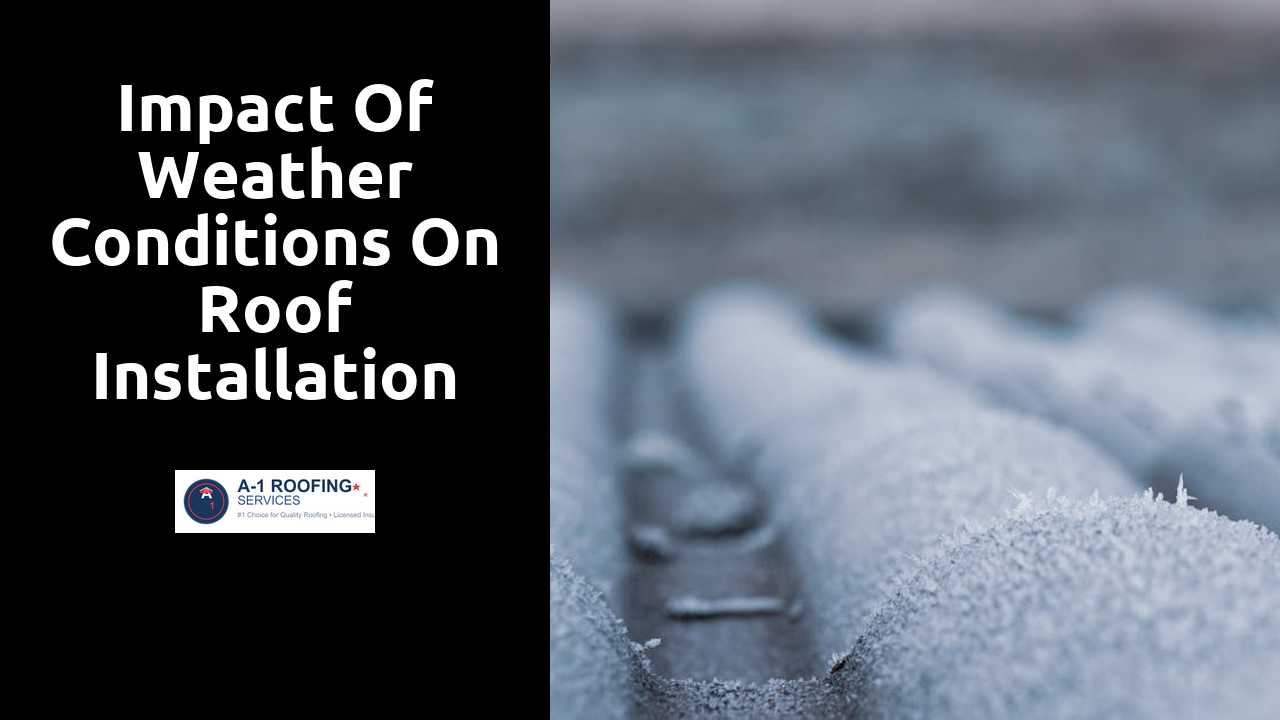
Impact of Weather Conditions on Roof Installation
Table Of Contents
Humidity Factors to Consider
Extreme humidity levels can significantly impact roofing projects. High moisture in the air can lead to problems such as longer drying times for adhesives and sealants. If materials are installed during overly humid conditions, they may not cure properly, resulting in potential issues with durability and effectiveness. Moreover, shingles and other roofing materials can absorb moisture, increasing their weight and complicating the installation process.
Conversely, low humidity may also pose challenges during roofing work. Dry air can lead to rapid evaporation of materials, causing adhesives and sealants to set too quickly. This situation may limit the working time for roofers to properly install components. Additionally, low humidity can contribute to the brittleness of some materials, making them more susceptible to damage during installation. Understanding these humidity factors is crucial for a successful roofing project.
Navigate to this website to learn more.
Impact of High Humidity on Installation Quality
High humidity levels can significantly affect the quality of roof installations. When the air is saturated with moisture, roofing materials such as shingles and membranes may not adhere properly. This can lead to issues like curling, buckling, or premature degradation of materials. In situations where water vapor is trapped beneath roofing components, it may foster mold growth or create an environment conducive to decay.
Installation crews may face challenges during high humidity days, impacting the efficiency and effectiveness of their work. Moisture can cause various materials to expand, which complicates alignment and fitting. Additionally, workers may experience discomfort or fatigue due to elevated humidity, leading to decreased focus and potential errors during installation. These factors can combine to undermine the overall integrity and longevity of the roof.
Seasonal Variations in Roofing
The seasonal changes can greatly influence the roofing installation process. Spring and fall often present ideal weather conditions, with moderate temperatures and lower chances of extreme weather events. These seasons are typically preferred for roofing projects, allowing for more comfortable working conditions for the installation crew and ensuring better adhesion of roofing materials.
Winter poses significant challenges for roofing work. Cold temperatures can lead to materials becoming brittle, and the risk of snow or ice can hinder progress. Conversely, summer might bring high heat, which can affect the curing time of adhesives and sealants. Each season requires careful planning to address its unique challenges, making it essential for homeowners and contractors to adapt their strategies accordingly.
Best Seasons for Roof Installation
Spring and fall are generally regarded as the best seasons for roof installation. These periods typically offer mild temperatures and lower humidity levels, which create ideal working conditions. During these times, materials adhere better, and workers are less susceptible to heat exhaustion or discomfort. Additionally, these seasons often provide more predictable weather patterns, minimizing the chances of rain delays that could hamper the installation process.
Installing a roof during summer can be challenging due to high temperatures and humidity, which may affect material performance. In contrast, winter installations pose their own risks, including potential complications from freezing temperatures and snow. By focusing on spring and fall, contractors can ensure a smoother installation process, improving the overall quality and longevity of the roof. This planning not only enhances efficiency but also contributes to better outcomes for homeowners.
Forecasting Weather for Planning
Reliable weather forecasting is essential for effective planning in roofing projects. Accurate predictions can help contractors schedule installations during favorable conditions, leading to better results. Various tools are available to assist with weather forecasting. Meteorological apps offer real-time updates, while websites provide detailed forecasts for specific regions.
Understanding local climate patterns aids in making informed decisions. Seasonal trends can indicate when to expect rain, snow, or extreme temperatures. Consulting the National Weather Service or local meteorological stations can provide crucial insights into upcoming conditions. By anticipating weather changes, roofing professionals can minimize delays and ensure quality workmanship.
Tools and Resources for Accurate Weather Prediction
Accurate weather forecasting is essential for planning successful roof installations. Numerous online platforms and mobile applications are available, providing real-time updates on weather patterns. These tools allow contractors to anticipate adverse conditions and adjust their schedules accordingly. For in-depth data, meteorological websites offer detailed forecasts that include temperature, precipitation levels, and wind speeds, which are crucial for effective roofing projects.
In addition to digital resources, using local weather stations can enhance predictions. Local broadcasters often provide tailored forecasts, taking into account regional peculiarities that larger services may overlook. Engaging with community meteorologists can also yield insights into upcoming weather trends. By leveraging these various tools and resources, professionals can make more informed decisions and ensure the integrity of their roofing installations is maintained.
Related Links
Importance of Roofing Underlayment in Home Roof InstallationTimeline of a Typical Residential Roof Installation Project